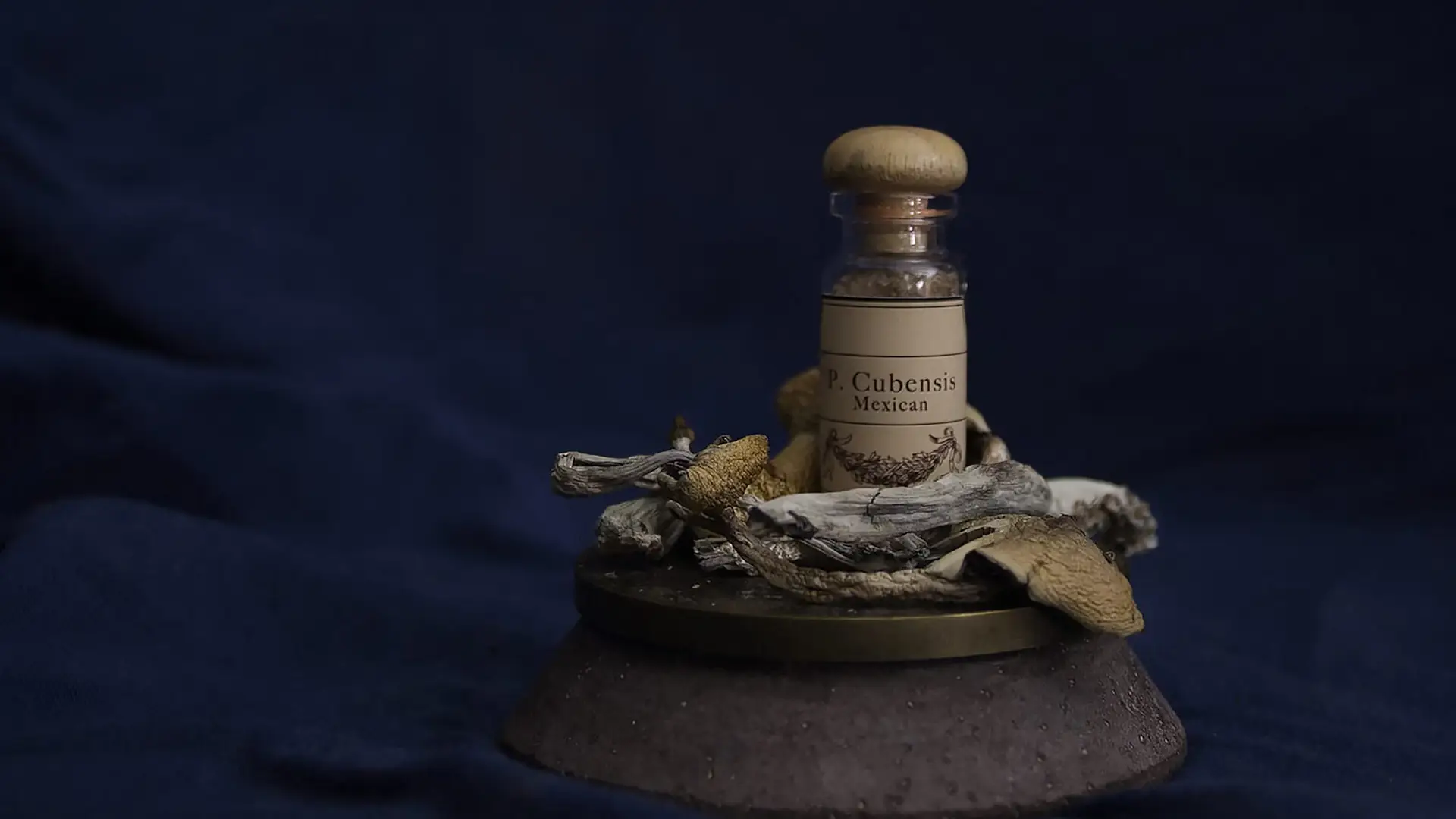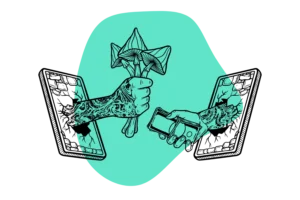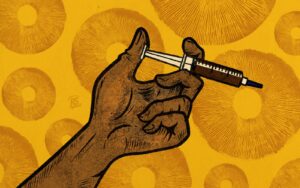Introduction
Psilocybin therapy has become one of the most talked-about approaches in mental health and wellness. Backed by research from institutions like Johns Hopkins, Imperial College London, and other global centers, this form of therapy uses psilocybin—the active compound in magic mushrooms—combined with professional guidance to address issues such as depression, anxiety, PTSD, and addiction.
If you’ve ever wondered what actually happens during a psilocybin therapy session, this step-by-step guide will walk you through the process. From the first consultation to the integration phase, you’ll learn exactly what to expect.
What Is Psilocybin Therapy?
Psilocybin therapy combines controlled use of psilocybin with psychological support. Unlike recreational use, therapy sessions are designed to be structured, safe, and purposeful.
The goal is not just to experience a psychedelic “trip,” but to unlock deep emotional insights, rewire thought patterns, and foster healing. Trained therapists or facilitators guide patients through the process, ensuring a supportive environment.
Step 1: The Initial Screening and Preparation
Before a psilocybin therapy session begins, participants go through an in-depth screening process.
Medical and Psychological Evaluation
- Health history check: Screening for heart conditions, schizophrenia, or bipolar disorder (conditions where psilocybin may not be safe).
- Current medications: Some antidepressants or psychiatric medications can interfere with psilocybin.
- Mental health goals: Patients discuss why they’re seeking therapy—whether it’s to treat depression, overcome trauma, or pursue personal growth.
Building Trust with the Therapist
Since the therapy involves deep vulnerability, participants meet with their therapist or facilitator beforehand to establish trust. A strong therapist-patient relationship creates a sense of safety.
Step 2: Preparing the Mind and Setting Intentions
One of the most important parts of psilocybin therapy is intention setting.
What Is Intention Setting?
Participants are encouraged to reflect on questions such as:
- What do I want to heal or understand?
- What emotional blockages am I carrying?
- What outcome would I like to experience?
This doesn’t mean controlling the journey—it simply means approaching it with openness and purpose.
Creating the Right Mindset
Therapists help participants manage expectations. They explain that psilocybin therapy is not always easy or pleasant. Sometimes, difficult emotions arise, but those can be the key to breakthroughs.
Step 3: Creating a Safe and Comfortable Setting
The environment where psilocybin therapy takes place is intentionally designed for safety and comfort.
The Therapy Room
- Soft lighting, calming music, and comfortable seating or a bed.
- Eye masks are often used to encourage inward reflection.
- Therapists remain present throughout the session to provide support if needed.
This environment is sometimes described as a “healing container” where participants feel secure enough to fully surrender to the experience.
Step 4: Taking Psilocybin
Once everything is set, the psilocybin is administered.
Dosage
The dose depends on the therapeutic goal.
- Low doses (microdoses): Used in research for creativity and mood.
- Moderate to high doses: Used in clinical therapy for deep healing and breakthrough experiences.
Onset of Effects
After ingestion, it typically takes 30 to 60 minutes to begin feeling the effects. The full journey lasts 4 to 6 hours, during which therapists remain present.
Step 5: The Psychedelic Experience
The psilocybin journey is the core of the therapy session. Each experience is unique, but there are common stages.
Altered Perception
Participants may notice:
- Vivid colors and visual patterns
- Changes in sense of time
- Deep emotional waves
Emotional Processing
Difficult emotions may surface, such as grief, fear, or trauma. Therapists reassure participants that facing these feelings is often the path to healing.
Spiritual or Mystical Experiences
Many describe feelings of:
- Unity with nature or the universe
- Dissolution of the ego (“ego death”)
- Deep insights into life and relationships
Therapists do not interfere unless necessary—they simply provide reassurance and grounding if the participant struggles.
Step 6: Returning to Baseline
After the peak experience, effects gradually fade.
- Participants may feel emotionally sensitive, tired, or peaceful.
- Therapists encourage rest, journaling, or quiet reflection.
- No major discussions usually happen immediately after the journey, since the participant is still processing.
Step 7: The Integration Phase
Integration is often called the most important part of psilocybin therapy. Without it, insights may fade without long-term benefits.
What Integration Involves
- Therapy sessions post-experience: Talking about what surfaced during the journey.
- Action steps: Turning insights into real-life changes.
- Support tools: Meditation, journaling, or support groups to reinforce positive growth.
Why Integration Matters
The brain becomes highly “plastic” after psilocybin therapy, meaning it is more open to forming new thought patterns. Integration helps anchor those new pathways into daily life.
Potential Benefits of Psilocybin Therapy
Research highlights several potential benefits:
- Relief from treatment-resistant depression
- Reduced anxiety in cancer patients
- Breaking addiction cycles (alcohol, nicotine, etc.)
- Enhanced emotional openness and self-acceptance
- Improved spiritual well-being and connection
Important Considerations
- Legal status: Psilocybin is illegal in many countries. Some regions (like Oregon, parts of Canada, and certain cities) allow therapeutic use under supervision.
- Not for everyone: People with certain psychiatric or medical conditions may be advised against psilocybin therapy.
- Professional guidance is essential: Recreational use is not the same as therapy. Trained facilitators help ensure safety and therapeutic outcomes.
Conclusion
A psilocybin therapy session is more than just taking a psychedelic substance. It is a carefully designed process involving preparation, intention, a safe environment, guided support, and post-session integration.
While the experience itself may bring intense emotions and altered perceptions, the true healing often happens in the integration phase—when insights are applied to everyday life.
As research continues, psilocybin therapy is becoming a promising tool for those struggling with mental health challenges. Understanding each step of the journey helps remove mystery and provides a clear path for anyone curious about what really happens in a psilocybin therapy session.
Key Takeaways
- Psilocybin therapy combines psychedelic experiences with professional guidance.
- The process involves screening, preparation, safe setting, psilocybin dosing, the psychedelic journey, and integration.
- Integration is crucial for lasting healing and change.
- Research shows promise for treating depression, anxiety, PTSD, and addiction.
- Always consider legal and health factors before pursuing psilocybin therapy.



